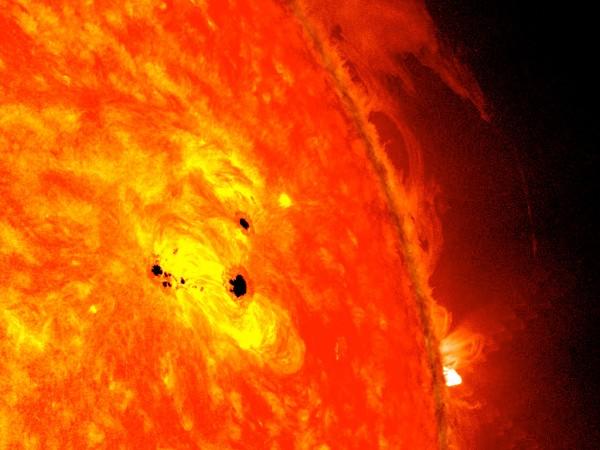
A strong solar wind unleashed from the Sun on Sunday (February 11) will start hitting the Earth from Thursday ( February 15) causing geomagnetic storms, according to the Solar Dynamics Observatory Satellite of NASA. The massive solar flare could affect the power grids and interfere with satellite operations, according to reports.
The solar wind contains plasma and magnetic field from the solar corona and this is known as coronal mass ejection (CME). The CMEs are responsible for blasting a billion tons of particles, which travels millions of miles an hour.
National Oceanic and Atmospheric Administration (NOAA) has forecast a G-1 or "minor" storm, which, depending on how the charged particles hit Earth, can upgrade into a G-2 or "moderate" storm.
The geomagnetic storms are categorized into three, the weakest being called G, while the middle and severe are called R and S respectively.
The first CME was observed at 8:25 pm on Sunday and continued until Monday morning.
Impacts of geomagnetic storms on the Earth
Though solar flares are pretty common, they can create fluctuations in power grids. The Thursday is considered minor but it might interfere with satellite operations, according to experts.
Engineers are advised to shut down non-essential systems if the storm appears to be severe and prepare for a possible power grid fluctuation.
Local 10 has reported that Space Weather Prediction Center (SWPC) has switched from their primary operational spacecraft Deep Space Climate Observatory (DSCOVR).
The flares also create Aurora at higher altitudes. The Weather Network said that the G1 storm is expected to create northern lights, also known as aurora borealis, over Canada and the neighboring regions.
Auroras light up the sky when the Earth comes in the way of a solar wind and the charged particles enter the atmosphere. Once entered, these charged particles start striking atoms and molecules present in the magnetosphere of the planet, causing them to light up.
A magnetosphere, which is present around a planet, is the space that is controlled by the planet's magnetic field, according to NASA.
The change in the color of Auroras depends on which atom the particles are hitting. While oxygen gives off the green color, Nitrogen causes blue or red colors.
In 1859, an extremely powerful solar storm hit the Earth but did not have a major impact due to lack of advancement in technology systems. But the latest one has alarmed the European Union's Joint Research Centre (JRC), which has said another such powerful solar storm will negatively impact crucial navigation and control systems across the continent's railway network, especially those which are computerized and automated.
"Railway networks could be affected in case of an extreme space weather event due to direct impact on system components, such as track circuits or electronics, or indirectly via dependencies on power, communications, and progressively on Global Navigation Satellite Systems (GNSS) for timing and positioning," ScienceAlert reported, quoting JRC
Why a geomagnetic storm now?
The Sun follows a specific 11- year cycle called the solar magnetic activity cycle. In the specific period, solar activities hit minima and maxima -- the two extremes. During the minimum cycle, though solar cycles still occur, the intensity is very low, while during a maximum cycle, solar flares go up and sun spews out billion-ton clouds of electrified gas into space.
April 2014 was the last maximum and 2018 is a transient period which will lead to solar minima in 2019-2020. According to Seeker, 2018 was expected to be quieter.










